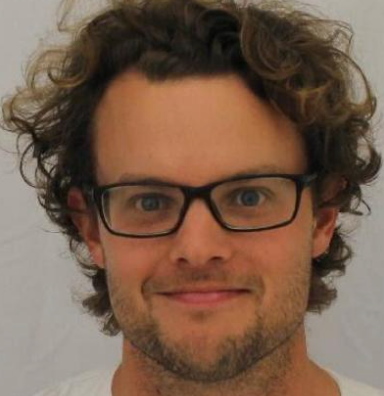News
Article
Histological, Clinical Disease Activity Linked to Reduced Fertility in Women with IBD
Author(s):
Histological inflammation and clinical IBD activity were both associated with reduced fertility rates compared to histological remission and quiescent IBD.
Karl Mårild, MD, PhD
Credit: University of Gothenburg

Findings from a recent study are calling attention to a significant association between histological disease activity and fertility in women with inflammatory bowel disease (IBD), highlighting the impact of histological inflammation and remission on patients’ fertility rate.1
Results from the analysis of data from a nationwide cohort of women 15-44 years of age with IBD in Sweden showed patients with clinical disease activity had a lower fertility rate compared to those with clinically quiescent IBD, further highlighting the negative impact of histological inflammation on fertility regardless of disease activity.1
“Despite the increasing appreciation of histological activity in IBD, its association with female fertility has not been clarified, including whether histological activity in the absence of clinical disease activity impairs fertility,” wrote Karl Mårild, MD, PhD, associate professor of pediatrics in the Institute of Clinical Sciences at Sahlgrenska Academy at the University of Gothenburg in Sweden, and colleagues.1
IBD affects the gastrointestinal tract but also presents extraintestinal manifestations, including infertility. Knowledge regarding the obstetrical management of IBD has improved greatly in recent years, yet many individuals with IBD continue to struggle with fertility or actively avoid pregnancy. Whether fertility is impacted by disease activity has not been explored but may provide clinicians with additional insight into the factors impacting patients’ reproductive health.2
To determine how fertility rates vary by histological disease activity, investigators used data from the Swedish National Patient Register and the Swedish Prescribed Drug Register to identify women diagnosed with IBD between 1969 and 2017 and compare fertility outcomes for women with histological remission to those without remission.1
The study included a pair of non-mutually exclusive groups of 15-44-year-old women with IBD, defined by investigators as having either ≥2 International Classification of Disease (ICD) codes in the Swedish National Patient Register or ≥1 ICD code and ≥1 relevant colorectal histopathology code from the nationwide ESPRESSO cohort. The first group included 21,046 women diagnosed in 1990-2016 with longitudinal data on colorectal biopsies. The second comprised 24,995 women with IBD diagnosed in 2006-2020 with data on clinical IBD activity.1
The primary exposure was periods of histological inflammation, defined as ≥1 histopathology code for ileo-colorectal inflammation or ulceration/erosion, versus histological remission, defined through ileo-colorectal histopathology codes M00100/M00110, the absence of codes for inflammation, and ulceration/erosion. The secondary exposure was clinically active IBD, defined as clinically active IBD as IBD-related surgery, hospitalization or ≥1 corticosteroid dispensing, initiation of an immunomodulator, or advanced therapies, including biologics, versus quiescent IBD, defined as disease periods without the features of clinically active IBD The study’s primary outcomes were fertility rate (live births per 100 person-years of follow-up) and fertility rate ratio (FRR).1
In total, investigators identified 11,626 women with IBD, contributing to 17,348 follow-up periods with histological inflammation, and 6180 IBD women contributing to 7933 follow-up periods with histological remission.1
Upon analysis, histological inflammation was more common in recently diagnosed IBD (mean time since diagnosis, 3.4 years; Standard deviation [SD], 4.7 years) than in histological remission (mean time since diagnosis, 4.8 years; SD, 5.1 years). During periods of histological inflammation, the fertility rate was 6.35 (95% CI 5.98 to 6.73) per 100 person-years of follow-up compared to 7.09 (95% CI, 6.48-7.70) per 100 person-years without histological inflammation.1
Investigators pointed out these rates corresponded to a 10% decreased fertility for women with histological inflammation (FRR, 0.90; 95% CI, 0.81-0.99), or 1 fewer child per 14 women over 10 years of histological inflammation. After adjusting for age, calendar year, education level, country of birth, marital status, and comorbidity, the adjusted FRR (aFFR) was 0.90 (95% CI, 0.81-1.00).1
From 2006 until March 31, 2020, investigators identified 15,600 women with 80,821 periods of clinically active IBD and 20,272 women with 48,735 periods of clinically quiescent IBD. During clinical IBD activity, the fertility rate was 6.22 (95% CI, 5.95-6.49) per 100 person-years compared to 7.97 (95% CI, 7.79-8.15) per 100 person-years with clinically quiescent IBD.1
Additionally, clinical IBD activity was associated with an aFRR of 0.76 (95% CI, 0.72-0.79) and reduced fertility compared to matched general population comparators (aFRR, 0.84; 95% CI, 0.81-0.88). Histological inflammation was associated with reduced fertility in both clinically quiescent IBD (aFRR, 0.85; 95% CI, 0.73-0.98) and clinically active IBD (aFRR, 0.98; 95% CI, 0.76-1.26).1
“Our findings suggest that achieving histological remission may improve the fertility of women with IBD, also in the absence of clinically defined disease activity,” investigators concluded.1
References:
- Mårild K, Söderling J, Stephansson O, et al. Histological remission in inflammatory bowel disease and female fertility: A nationwide study. Gastroenterology. https://doi.org/10.1053/j.gastro.2024.01.018
- Ronchetti C, Cirillo F, Di Segni N, Cristodoro M, Busnelli A, Levi-Setti PE. Inflammatory Bowel Disease and Reproductive Health: From Fertility to Pregnancy-A Narrative Review. Nutrients. 2022;14(8):1591. doi:10.3390/nu14081591





